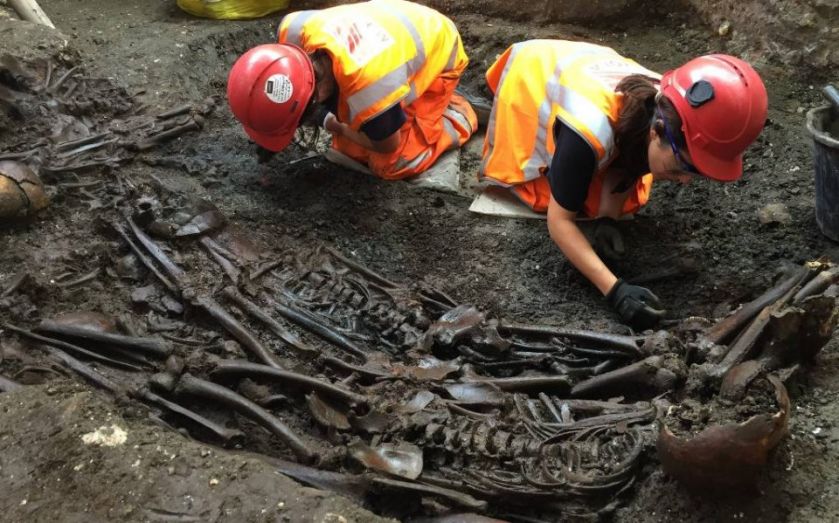Crossrail workers find mass burial site containing victims of “catastrophic event” the Great Plague of 1665 at Liverpool Street

Crossrail archeologists have uncovered a mass burial site at Liverpool Street containing the skeletons of victims from the Great Plague of 1665.
A mass burial site containing 30 bodies was unearthed during excavation of the old Bedlam hospital ground at the site.
A headstone found nearby with the date 1665, and the individuals appear to have been buried on the same day, leading the excavators to believe they were victims of The Great Plague.
“The thin wooden coffins have collapsed and rotted, giving the appearance of a slumped and distorted mass grave,” Crossrail said.
The skeletons will now be analysed by osteologists from Museum of London Archaeology, and scientific tests may reveal if bubonic plague or some other pestilence was the cause of death.
Lead archeologist for Crossrail Jay Carver said: “The construction of Crossrail gives us a rare opportunity to study previously inaccessible areas of London and learn about the lives and deaths of 16th and 17th Century Londoners.
“This mass burial, so different to the other individual burials found in the Bedlam cemetery, is very likely a reaction to a catastrophic event. Only closer analysis will tell if this is a plague pit from The Great Plague in 1665 but we hope this gruesome but exciting find will tell us more about the one of London’s most notorious killers.”
Mike Henderson, senior osteologist at the Museum of London Archeology, said: "The concentration of burials in this pit provides a new focus for scientific testing and study. We hope detailed osteological analysis will help determine whether these people were exposed to The Great Plague and potentially learn more about the evolution of this deadly disease."